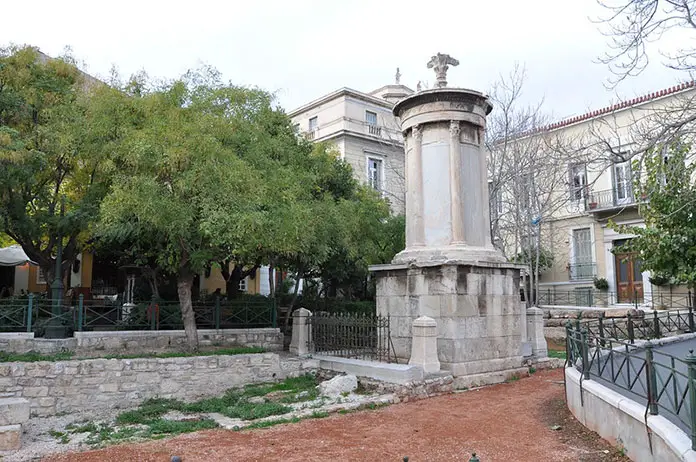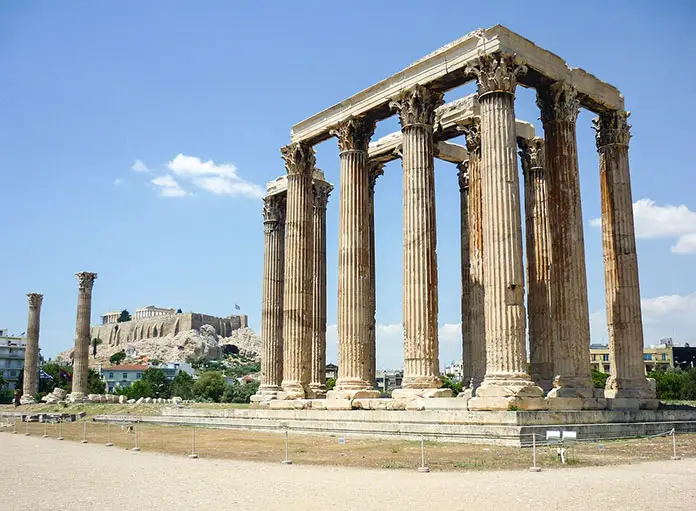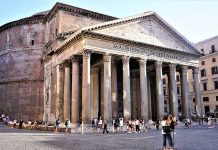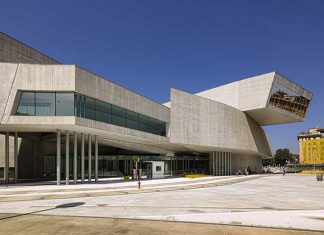The Corinthian order is one of the three main classical orders of ancient architecture. As you know these Greek classical orders are chronological Doric, Ionic and Corinthian orders. Then, Romans invented Tuscan and Composite orders alongside of Greek orders. Architects have developed all of these archaic architectural styles with special ratios. Although, they have the similar proportions and elements, there are some differences between the orders. For instance, some proportional features like column sizes, column capitals and their ornaments etc. differentiate.
While Doric order has always been related with masculinity, Ionic has been related with women’s bodies and Corinthian with the beauty. This order has usually more ornaments and is more complex than other classical styles. By this way, you can easily distinguish Corinthian order examples. Without further ado, let’s learn the facts about the ancient Corinthian order.
History of Corinthian Style Architecture
Corinth, was the name of an ancient Greek city, located in south-central Greece. The name “Corinthian” comes from that city. However, Vitruvius said that the inventor of Corinthian column is the Athenian sculptor and architect Callimachus. This sculptor drew the acanthus leaves which is the most distinguished element of Corinthian columns. If you want to look how to draw an acanthus leaf, you can check the book “De Architectura” by Vitruvius. In the light of these truthes, it seems that Corinthian style is originated to Antique Greece.
When we look at the history of Greek Corinthian order, seeing that footprints of the style extend over the last century of the classical era. Bassae, a part of Archadia in Antique Greece, has hosted to the first Corinthian column capital found, dated at 427 BC. Based on this knowledge, historians think that the last century of the classical period, 430-323 BC, is the era when the Corinthian order developed.
The first known Corinthian style column example in Ancient Greece was found at Temple of Apollo Epicurius, located in Bassae, in 450-420 BC. However, it was placed inside the temple. Actually, the order of the temple was Ionic. Moreover, some Doric columns were surrounding the building.
About during a century, these pillar type has placed only inside temples. The first Corinthian style use on the exterior was at the Choragic Monument of Lysicrates which was erected in Athens in 335-334 BC.

Then the style has spreaded in Roman Empire, in India and almost all of the Europe. As a matter of fact, Corinthian order had some different variations in progress of the time. It has been not only a part of classical orders but Gothic, Renaissance and other European revival styles.
Elements of Corinthian Order
1. Crepidoma
Crepidoma is the entrance stair of temples with 3 steps. The topmost step is called as stylobate and bottom two steps as stereobat. The upper foundation, on where an entire structure sits and the lowest step of the crepidoma directly touch it, is named as Euthynteria.
2. Corinthian Columns
Each one column types of ancient architecture, Doric, Ionic and Corinthian columns, has specific characteristics. So much so that, the classical architectural orders are characterized with their columns. However, the corinthian order has lots of variations, and so its the most flexible one. Nevertheless, recognizing it with the column capital is easy. Because, leaves on corinthian columns are only specific to this style. The capital of corinth columns is the most ornate one of the classical columns. Additionally, this pillar type has the tallest base comparative to other Greek pillars.
A classical column has 3 main parts: A column capital, a body, or shaft, and a base. The capital is the most engraving part of the structure with its over embellishments. A typical column base includes concave and convex rings called torus and scotia.

Corinthian Column Characteristics
- Corinthian Order columns, except some specific examples, have 24 slender flutes in their bodies.
- These columns are thinner and taller than others.
- A Corinthian capital has volutes, one or two rows of acanthus leaves and a fleuron flower which is in the middle of the abacus. Furthermore, capitals have small scrolls ornaments occasionally.
- Unlike Corinthian columns in Ancient Greece, Roman Corinthian columns have smooth (non grooved) and flat shafts.
- According to Vitruvius, the capital height of Corinthian pillars makes an optical illusion that shows the column taller and more slender than Ionic columns.
- Since pillars of this order spoil easily, first examples of Greek Corinthian columns were mainly used in interior spaces.
- In the Corinthian order proportions, the ratio between the height of column capitals and the thickness of shafts is 6:5.
3. Entablature
This part of the building is located above columns. It has 3 main subpart; cornice, frieze and architrave. Including triglyphs and metopes, frieze is a decoration line over the architrave. Cornice is upon the nearly upmost part of the roof. Corinthian roofs, unlike Doric and Ionic, can be flat. There is also a pediment on temples, usually in the form of a triangle. This pediment is located above the frieze.
Examples of Corinthian Order Architecture
Temple of Apollo Epicurius

The Temple of Apollo Epicurius gained importance as it hosts the oldest Corinthian column still standing. Dating to the 5th century BC, the temple was located in the settlement area of Bassae, which was part of Arcadia in ancient times. It has been on the UNESCO World Heritage List since 1986.
Choragic Monument of Lysicrates in Athens

It shines out as being one of the first examples of using Corinthian pillars exterior. In 334 BC, Lysikrat had this monument erected near the Acropolis of Athens to symbolize an award he received at the Dionysus Theatre. The monument has a cylindrical mass and a height about 6 meters. Fluted pilasters with Corinthian capitals surround it. The monument sits on a rectangular prism-shaped pedestal. Its facade contains most of the architectural elements that you can see on the exterior of a Corinthian temple. Elements such as frieze, architrave and cornice adorn this cylindrical form.
Temple of Olympian Zeus

According to historians, the Temple of Olympian Zeus had more than 100 Corinthian columns. This building in Athens was built between the 6th and 2nd centuries BC and was completed during the reign of Hadrian. Although it was built with the motivation to be the largest temple of Rome and the ancient world, it was ruined due to looting in the 3rd century AC. After this event, many elements of the building were gathered to be used in different Roman structures. Today, 18 columns and some parts of the structure are still in the archaeological area at the original site of the temple.
The Colosseum

Although the Colosseum has an eclectic style, we included it in our list because it is one of the most important works of ancient Roman architecture. Since the Romans developed the arch and vault and used them as the main carrier in their structures, they did not include columns in some buildings. In some, they used columns as visual elements, not as supporting elements, in order to maintain the aesthetics of ancient orders. One of the best examples of this usage is the Colosseum. We see 3 different layouts on its exterior. On the bottom floor there are Doric pilasters, on the 1st floor Ionic and on the 2nd floor we see Corinthian headed pilasters cohesived to the facade.
- Basilica of San Lorenzo, Italy
- The Arch of Constantine, Italy
- The Maison Carrée, France
- United States Capitol, USA
- National Archives Building, US
- The Reizhstag, Germany
- The Ancient Library of Celsus, Turkey
- Tower of the Winds, Greek
Bibliography
Mark Wilson Jones, “Designing the Roman Corinthian order”, Journal of Roman Archaeology 2:35-69 (1989).
Vitruvius. De Arci
Sir Banister Fletcher, A History of Architecture, 1950, p. 111
Craven, Jackie. “The History of Corinthian Columns.” ThoughtCo, Oct. 29, 2020, thoughtco.com/what-is-a-corinthian-column-177504.
https://whc.unesco.org/en/list/392/
Herbert F. De Cou, “The Frieze of the Choragic Monument of Lysikrates at Athens”, The American Journal of Archaeology and of the History of the Fine Arts, 8. 1 (January – March 1893):42-55) summarizes the history




















